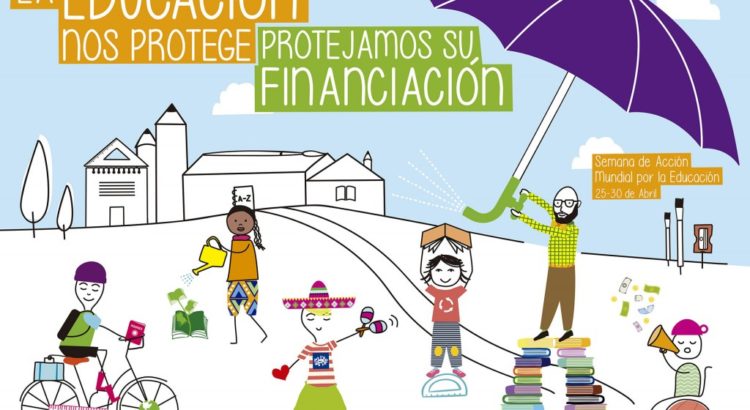América del Norte/Estados Unidos/Julio de 2016/Prensa Oficial Departamento de Educación Estados Unidos
RESUMEN: Publicado hoy, el informe, Tendencias en el Estado y los gastos locales sobre las correcciones y Educación, presenta una imagen especialmente acusada del gasto en educación superior en todo el país en un momento en que la educación superior es más importante que nunca. Desde 1990, el estado y el gasto local en la educación superior ha sido en gran parte plana, mientras que el gasto en correcciones se ha incrementado un 89 por ciento. «Los presupuestos reflejan nuestros valores, y las tendencias reveladas en este análisis son un reflejo de las prioridades de nuestra nación que debe ser revisado», dijo el secretario de Educación, John B. King Jr. EE.UU. «Durante demasiado tiempo, los sistemas de este país han seguido perpetuar la desigualdad. Debemos optar por hacer más inversiones en el futuro de nuestros hijos. Tenemos que invertir más en la prevención que en el castigo, a invertir más en escuelas, no cárceles «.
State and local spending on prisons and jails has increased at triple the rate of funding for public education for preschool through grade P-12 education in the last three decades, a new analysis by the U.S. Department of Education found.
Released today, the report, Trends in State and Local Expenditures on Corrections and Education, notes that even when population changes are factored in, 23 states increased per capita spending on corrections at more than double the rate of increases in per-pupil P-12 spending. Seven states—Idaho, Michigan, Montana, North Dakota, South Carolina, South Dakota, and West Virginia—increased their corrections budgets more than five times as fast as they did their allocations for P-12 public education. The report also paints a particularly stark picture of higher education spending across the country at a time when postsecondary education matters more than ever. Since 1990, state and local spending on higher education has been largely flat while spending on corrections has increased 89 percent.
“Budgets reflect our values, and the trends revealed in this analysis are a reflection of our nation’s priorities that should be revisited,” said U.S. Secretary of Education John B. King Jr. “For far too long, systems in this country have continued to perpetuate inequity. We must choose to make more investments in our children’s future. We need to invest more in prevention than in punishment, to invest more in schools, not prisons.”
The report sheds light on the connection between educational attainment and incarceration. The United States has only 5 percent of the world’s population yet more than 20 percent of the world’s incarcerated population. According to the Bureau of Justice Statistics, two-thirds of state prison inmates have not completed high school. One study also shows young black men between the ages of 20 and 24 who do not have a high school diploma or an equivalent credential have a greater chance of being incarcerated than employed. Researchers have estimated that a 10 percent increase in high school graduation rates results in a 9 percent decline in criminal arrest rates.
“Mass incarceration does not make us safer. Yet for three decades, our country has prioritized spending on prisons instead of classrooms,” said Valerie Jarrett, senior advisor to President Obama. “We can no longer afford this failure to invest in opportunity, only to lock up people once they’ve dropped out of school and turned to crime. These misguided priorities make us less safe and betray our values, and it is time we came together as a country to invest in our people and their capacity to contribute to society.”
The report comes after former U.S. Education Secretary Arne Duncan last September called on states and communities to invest in teachers rather than prisons by finding alternative paths for non-violent offenders outside of incarceration. The $15 billion that could be saved by finding alternate paths to incarceration for just half of non-violent offenders is enough to give a 50 percent raise to every teacher and principal working in the highest-need schools and communities across the country.
Key findings from the report include:
• Over the past three decades, between 1979–80 and 2012–13, state and local expenditures for P–12 education doubled from $258 to $534 billion, while total state and local expenditures for corrections quadrupled from $17 to $71 billion.
• All states had lower expenditure growth rates for P-12 education than for corrections, and in the majority of the states, the rate of increase for corrections spending was more than 100 percentage points higher than the growth rate for education spending.
• Even when adjusted for population changes, growth in corrections expenditures outpaced P-12 expenditures in all but two states (New Hampshire and Massachusetts).
• Over the roughly two decades, between 1989–1990 and 2012–2013, state and local appropriations for public colleges and universities remained flat, while funding for corrections increased by nearly 90 percent.
• On average, state and local higher education funding per full-time equivalent student fell by 28 percent, while per capita spending on corrections increased by 44 percent.
To read the full report released today, click here.
The United States spends more than $80 billion annually on corrections. The Department’s new report suggests that a better path forward would be increasing investments in education—from early childhood through college—which could improve skills, opportunities, and career outcomes for at-risk children and youth, particularly if the additional funds are focused on high-poverty schools. Investing more in increasing school success for disadvantaged children and youth could reduce disciplinary issues and reverse the school-to-prison pipeline. In addition, educational programs for incarcerated youth and adults could reduce recidivism and crime by developing skills and providing opportunities.
The Obama Administration continues to shine a light on reducing recidivism and promoting reentry for formerly incarcerated individuals. Recently, the Department announced that nearly 12,000 incarcerated students will enroll in the new Second Chance Pell pilot program, which allows students incarcerated in federal and state penal institutes to access pell grants for postsecondary education and training programs. The Department, in partnership with the U.S. Department of Justice’s Office of Juvenile Justice and Delinquency Prevention, created a $5.7 million grant program aimed at improving outcomes for students who have been involved in the criminal justice system by providing career and technical education, and released a toolkit providing guidance to educators and others to support a successful reentry system for formerly incarcerated youth and adults. The Education Department also recently called on colleges and universities to remove barriers that can prevent the estimated 70 million citizens with criminal records from pursuing higher education, including considering the chilling effect of inquiring early in the application process whether prospective students have ever been arrested.
A recent report from the Council of Economic Advisors titled “Economic Perspectives on Incarceration and the Criminal Justice System” shines further light on issues of incarceration and the criminal justice system. Additionally, the Administration has taken action to disrupt the school-to-prison pipeline through efforts like the President’s My Brother’s Keeper Initiative, which brings together partners from the federal government and almost every sector to improve opportunity for all young people, including young men and boys of color.
Fuente: https://www.ed.gov/news/press-releases/report-increases-spending-corrections-far-outpace-education











 Users Today : 14
Users Today : 14 Total Users : 35460367
Total Users : 35460367 Views Today : 20
Views Today : 20 Total views : 3419120
Total views : 3419120